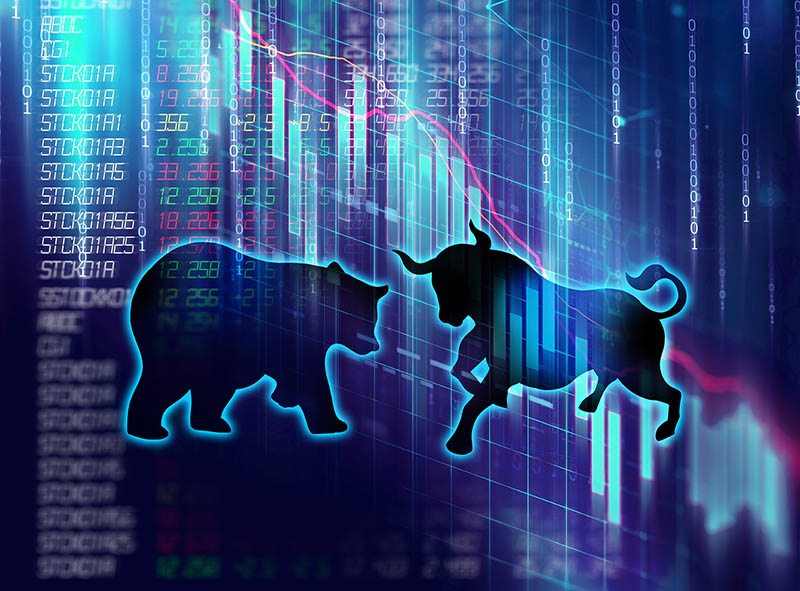(Justin Vaughn, Editor, Options Trading Report)
Inflation Hits Fastest Clip since 1982… Consumer prices rise by 7% as pandemic disruptions, and consumer demand stays strong. The Labor Department said Wednesday the consumer-price-index-which measures what consumers pay for goods and services–rose 7% in December from the same month a year earlier, up from 6.8% in November. That was the fastest since June 1982 and marked the third straight month in which inflation exceeded 6%. The so-called ‘core price index’ which excludes the often-volatile categories of food and energy, climbed 5.5% in December from a year earlier. That was a bigger increase than November’s 4.9% rise, and the highest rate since 1991. “There is still tremendous momentum when it comes to inflation right now. While inflation is likely to peak in the next few months, the overall pace is going to remain a challenge for consumers, businesses, and policy, said Sarah House, director and senior economist at Wells Fargo. Interestingly stock prices took the inflation news in stride, with the Dow Jones Industrial Average along with the S&P 500, digesting all the ‘inflation news’ with little movement, not peaks and valleys. Today the Covid-19 pandemic has caused supply-chain disruptions, and a shortage of goods and materials–particularly autos–coupled with strong demand from consumers, flush with the benefits of government stimulus, are behind the inflation surge. Prices for autos, and other durable goods continue to drive much of the inflationary surge, fueled by the pandemic related imbalances of supply and demand, that most consumers expect to…fade away. Prices of used cars and trucks soared a whopping 37.3% in December from a year earlier, while living room, dining room furniture jumped 17.3%.
Fed Chairman Jerome Powell in Congressional testimony Tuesday (1-11-22), said he was optimistic supply-chain issues would ease this year. However, he noted that a smaller U.S. labor force “can be an issue going forward for inflation, probably more so than these supply chain issues.” Constance Hunter, the chief economist at KPMG, expects the booming demand for goods to reverse in the first half of 2022, easing overall price pressure. “I do think we’ll get back to some semblance of normal as people run through their savings and, hopefully, as we move past Omicron, she said.
The yield on the benchmark 10-year U.S.Treasury note was up for a fourth straight week. Investors were still ‘assessing’ the outlook for interest rates and just how fast the Fed will move to ‘tame inflation.’ Late Jisession buying pushed the S&P 500 up 382 points or less than 0.1%, to 4662.85 and the Nasdaq Composite gained 86.94 points or 0.6% to 14893.75. The Dow Jones Industrial Average fell 201.81 points or 0.6% to 35,911.81. “We expect a more volatile environment, with big days and big down days. Perception of inflation will be a driving force in the direction of the market,” said David Donabedian, chief investment officer at CIBC Private Wealth U.S., he adds, “It will be a bumpy ride.”
Beer-vs-Liquor…and the pandemic. Covid-19 has brought America’s long-running beer-vs-liquor rivalry to a head. Brewers are struggling to retain their dwindling edge, while spirits makers see a chance to further their ‘ascension by burnishing’ liquor’s reputation and using canned cocktails as a new beer rival while pushing to loosen restrictions. “If they succeed in changing state regulations, the beer industry, brewers and wholesalers alike, would face virtually permanent declines in volume, revenue, and profits while liquor volume and profits would soar,” said Jim Koch, founder of Sam Adams maker Boston Beer. Beer was long America’s undisputed booze king. But liquor makers for over two decades have been taking market share from brewers, helped by young drinkers, preoccupied with their waistlines and thirsty for new flavors. The pandemic has accelerated that trend, as homebound Americans ‘splash’ out on pricier booze, such as bourbons, rye, and flavored liquors. In 2020, distillers reported their best sales in four decades–including ready-to-drink cocktails–while beer sales dropped. At the fight’s core is an age-old question: Is beer qualitatively different from spirit’s? Historically, the answer has been yes, resulting in higher federal and state taxes–and stricter distribution rules–on spirits than on beer. The main liquor trade body, Distilled Spirits Council of the U.S., or Discus, calculates that the base federal excise tax rate is 12.7 cents on a 1.5-ounce shot of spirits and 5.4 cents on a 12-ounce beer. The average state excise tax, according to the group, is 8.4 cents on the shot and 3.2 cents on the beer. Discus estimated spirits makers could grab 10% of the beer industry’s roughly $88 billion U.S. market. In 2020 alcohol market by value increased to 39% from 28% in 1999, according to data from Discus, the liquor body. Wine edged up to 17% from 16%, the data show, while beer’s market share declined to 44% from 56%. Last year, 39% of U.S. drinkers said beer was the alcoholic drink they drank most often, down from 46% in 2001, according to Gallup: 27% said liquor was theirs, up from 18%. The fight ‘brews’ on with no real winners’ as beer and spirits ‘drink-it-out!’
RUMBLINGS ON THE STREET
Scott Black, Founder and President, Delphi Management, Barron’s “I would avoid fixed income like the plague.”
Louis D’Anella, fixed-income strategist at asset manager Insight Investment. Barron’s “At this point it’s more of a bond market than a blanket call, because while growth is supportive, valuations are certainly tighter,” he said.
Marc McCain, president, chief investment officer at Frost Investment Advisors, WSJ “I think that the market has been well prepared at this point for the tapering and rate increases, said Mr. McCain. “They’re able to once again look forward to what’s going to be a strong earnings season,” he adds.
Federal Reserve Chairman, Jerome Powell, Barron’s “We are going to have to be humble but a bit nimble.”
Ian Lyngen, head of U.S. rates strategy at BMO Capital Markets, in a note to clients, WSJ “There is a strong argument to be made that investors were positioned for a more dramatic response,” and began covering bets against Treasurys after the data, wrote Mr. Lyngen
THE NUMBERS, Barron’s
$480 Billion Assets in U.S. public pension funds allocated to private equity, up from $300 billion in 2018
$2.7 Trillion Amount of savings built by Americans during the pandemic.
3.3 Million Number of baby boomers retiring as of October 2021 from January 2020, exceeding the expected demographic shift.
$47 Billion Volume of global data-center deals in 2021, a record, up from $34.5 billion in 2020, and three times that of 2018.

